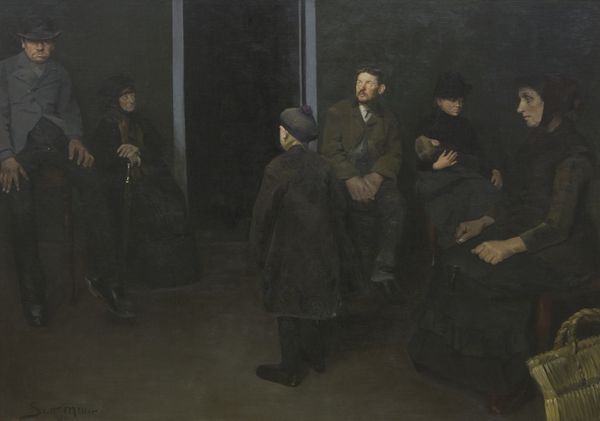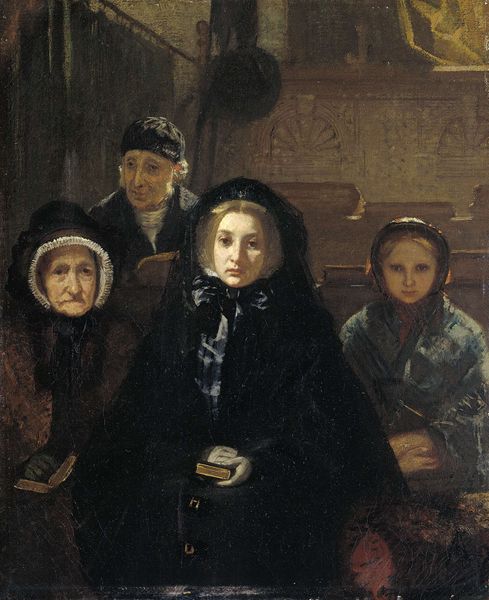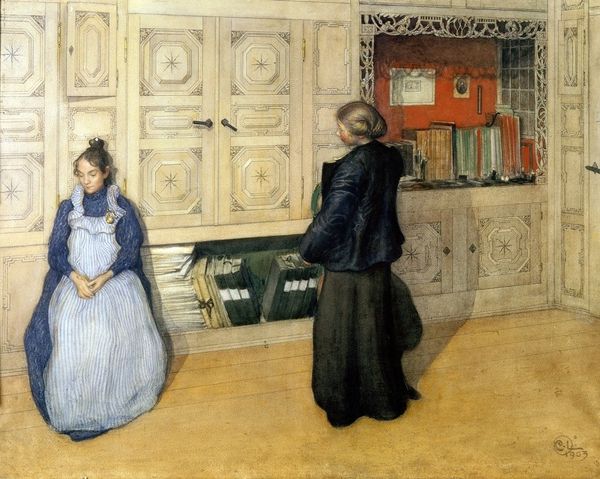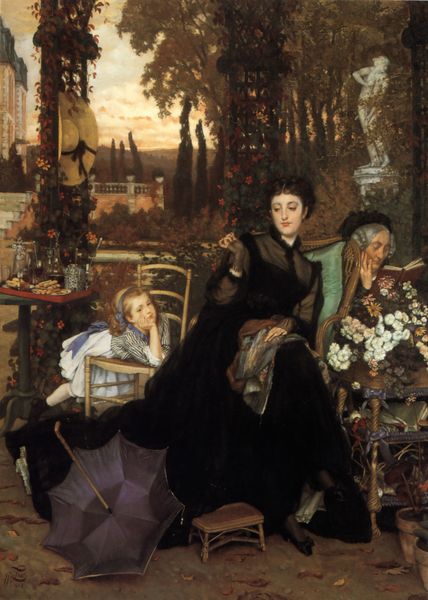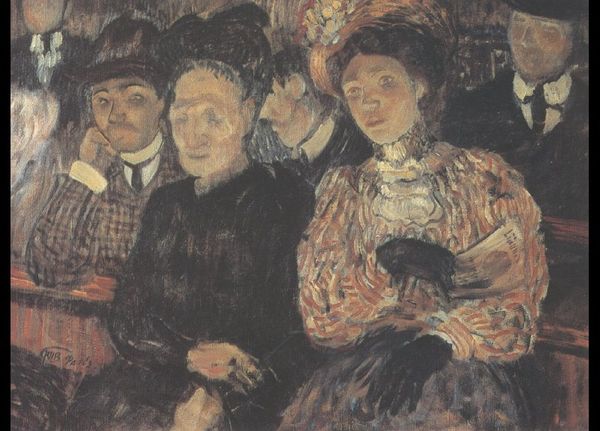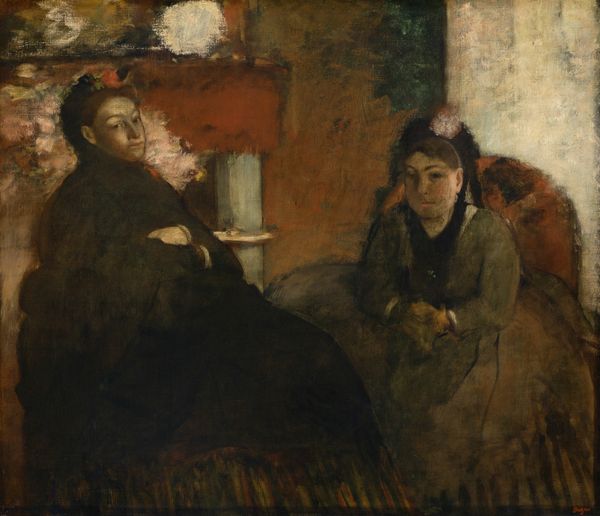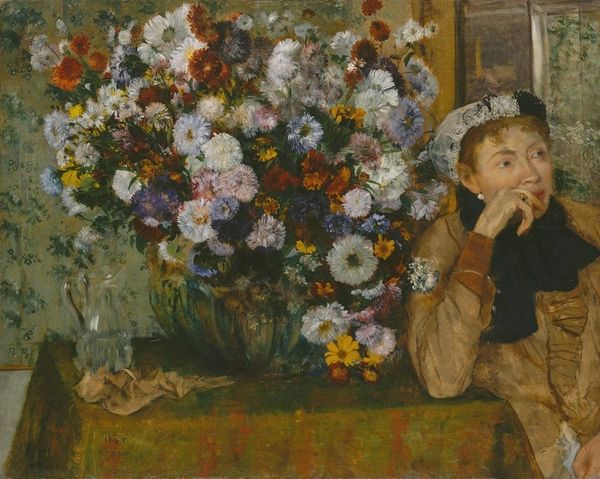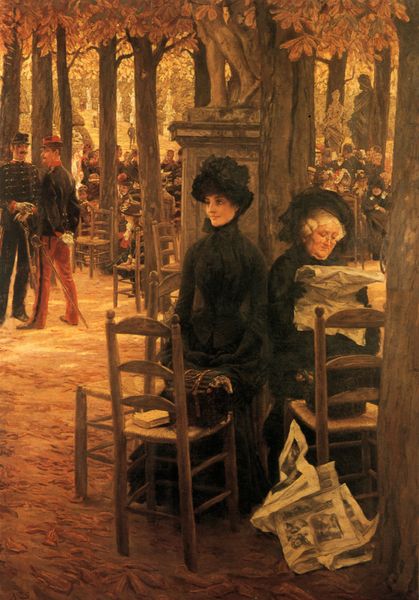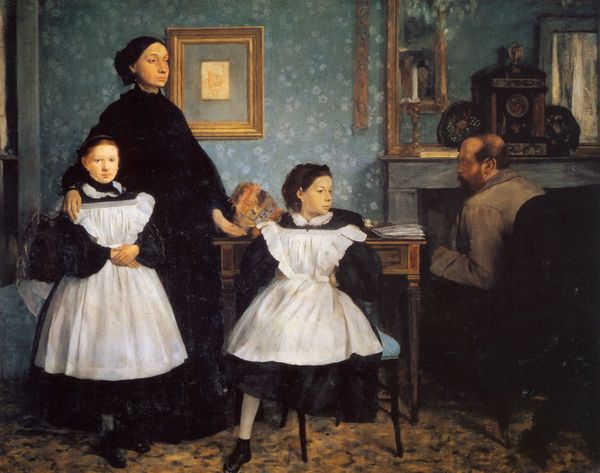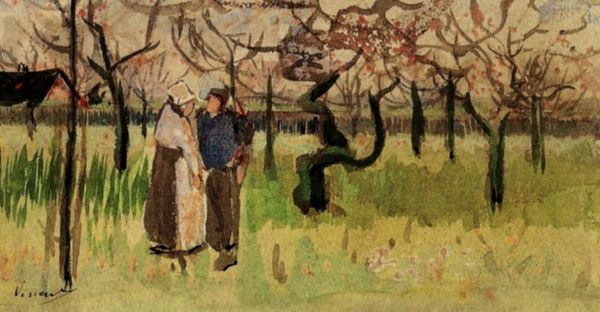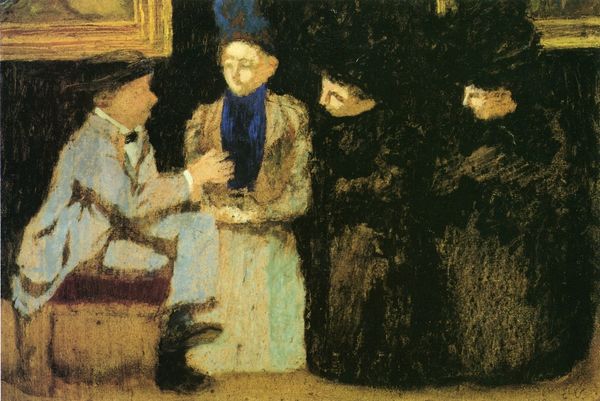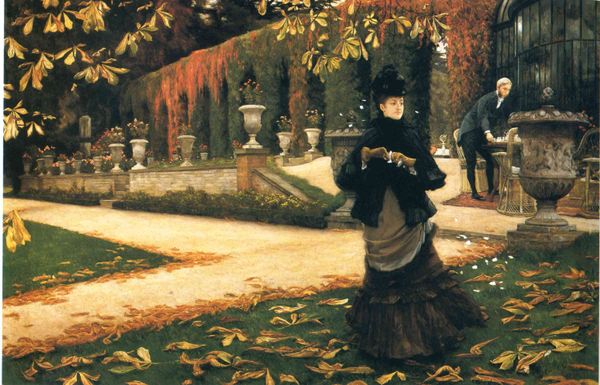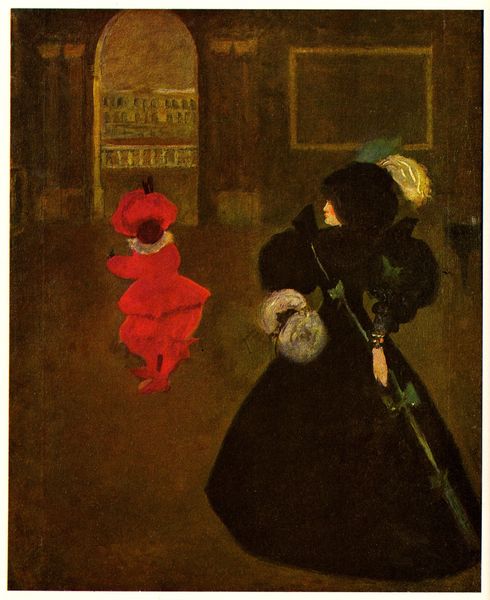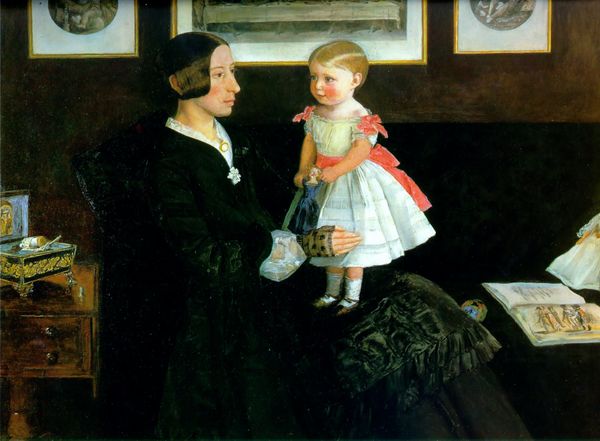
Interior with mother and sister of the artist 1893
0:00
0:00
edouardvuillard
Museum of Modern Art (MoMA), New York City, NY, US
painting, oil-paint
#
portrait
#
art-nouveau
#
painting
#
oil-paint
#
intimism
#
group-portraits
#
les-nabis
#
symbolism
Dimensions: 46.3 x 56.5 cm
Copyright: Public domain
Curator: Immediately, I feel the sense of compressed, interior space. The figures seem almost pressed against the picture plane. Editor: You're right; there's an undeniable claustrophobia. Let's delve into this intimate portrayal. We're looking at Édouard Vuillard's "Interior with mother and sister of the artist," an oil painting dating back to 1893. It's currently housed here at MoMA. Curator: The patterning! It’s so pervasive. The wallpaper threatens to engulf everything, blending into the sister’s dress in this dizzying effect. The dark dress of the mother, too, feels less like a distinct garment, and more like shadows in a symbolic representation of memory and grief. Editor: Indeed, Vuillard was associated with Les Nabis, a group that leaned heavily into symbolism, exploring emotional states through flattened perspectives and decorative surfaces. The effect is almost suffocatingly domestic, revealing, I think, bourgeois interiority with all its constraints. The figures merge into the decor in a way that diminishes the boundaries of self and environment, which was a significant shift for portraying the intimate space. Curator: Absolutely. There's a sense of the psychological weight of these familial spaces. We aren’t simply looking at a portrait; we're peering into the emotional landscape forged by domesticity and family relationships. Look at the angle of the sister's bowed head! It suggests introspection and internalized burdens that many women carry. It recalls familiar scenes—sitting rooms filled with unstated emotions. Editor: The darkness also interests me. Consider that black, heavy dress worn by the mother: Does it hint at mourning? This intimate family space hints at public social structures, which dictated much of female expression at the time. Vuillard’s choice to frame these figures within confining patterns creates a complex dialogue between individual agency and imposed norms. Curator: So, beyond the aesthetic beauty, we can find powerful suggestions. The image holds so much tension between what is seen and what is felt—the unspoken language within these family relationships is palpable. Editor: This is more than just a decorative interior, right? It is also a powerful comment on the societal and personal forces shaping individual lives, captured within the seemingly mundane setting of a family home. Curator: Precisely. It is this blending of public and private history, memory and loss that stays with us. Editor: Absolutely. A seemingly simple interior scene holding a mirror to ourselves and to the pressures we bear, generations apart.
Comments
No comments
Be the first to comment and join the conversation on the ultimate creative platform.
